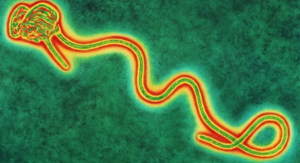
Hunting Down Ebola with Big Data

Big data analytics firms are stepping forward to help African nations combat the massive Ebola outbreak that has claimed thousands of lives. Much of the focus is currently focused on leveraging data collected from cell phone networks, which are relatively well developed in West Africa.
Officials say that nearly 5,000 people have died and more than 13,000 have been infected in the Ebola outbreak that began six months ago. But due to underreporting, officials warn that many more have been infected and died from the viral hemorrhagic fever, which has devastated towns and villages in Sierra Leone, Liberia, and Guinea. If Ebola is not slowed down, it could infect more than a million people by January, health officials say.
IBM has stepped up by donating software and services aimed at giving government officials in several countries better ability to collect, analyze, and disseminate information. That includes a citizen engagement and analytics system in Sierra Leone, one of the hardest hit by Ebola.
Big Blue worked with the Open Government Initiative in Sierra Leone to create a system that lets people report information about Ebola via SMS or voice call. The SMS and calls contains geographic information, which IBM uses to create “heat maps” of Ebola information. These heat maps are then used to identify areas where Ebola is starting to appear.
The IBM system was developed in concert with Airtel, the mobile phone operator that set up phone number citizens can send messages to. The data from the cell towers is stripped out and anonymized by Kenyan start-up Echo mobile, IBM says.
“We saw the need to quickly develop a system to enable communities directly affected by Ebola to provide valuable insight about how to fight it,” says Dr. Uyi Stewart, Chief Scientist for IBM Research in Africa. “Using mobile technology, we have given them a voice and a channel to communicate their experiences directly to the government.”

IBM generates a heatmap of Ebola cases in Sierra Leone based on cell phone data
IBM has also donated a license to Connections, its social networking software for businesses, to the Nigerian organizations tasked with controlling Ebola. Nigeria had a big scare when Ebola showed up in Lagos, one of the biggest cities in the world, in the late summer. But the country declared itself Ebola free earlier this month, and plans to use the IBM social networking software to bolster communication with citizens.
Meanwhile, geographic information systems (GIS) giant Esri is also donating its time, technology, and expertise in hopes of stemming the tide of the savage disease in Liberia. The project, which is being coordinated by Esri in concert with the U.S. Centers for Disease Control (CDC), involves collecting call details from cell phone towers, and then plotting data from Ebola-related calls in Esri’s GIS software.
“When you have a dense urban setting where the health system is struggling to cope with an outbreak like this,” such geography tools “become crucial to help guide the limited health care resources,” Esri’s chief medical officer Este Geraghty said in a NextGov story.
Esri’s software goes beyond plotting real-time information, and can be used to look back into time. “When emergencies arise, such as the Ebola outbreak in West Africa, using GIS for disease modeling can combine historical and current disease and environmental information,” Geraghy says in a post on the company’s website. “This helps us predict transmission patterns, analyze the environmental factors that encourage disease, and plan interventions.”
Ebola is not the first disease to be tracked using big data techniques. Google famously charts the annual spread of influenza around the world with its Google Flu Trends website, which looks for keywords in Web searches that are indicative of flu. A number of projects aim to track the spread of diseases like malaria and HIV/AIDS using social media.
Big data played a role in the initial detection of the Ebola outbreak this spring. The HealthMap tool, which tracks thousands of government and social media sites along with local news reports, identified the Guinea outbreak more than a week before the outbreak was officially revealed by the World Health Organization (WHO). However, by then, the Guinean government had already announced that an unidentified hemorrhagic fever was killing people.
While Africa presents some challenges in the use of big data techniques, it also provides advantages, especially compared to Ebola in the U.S., says Arijit Sengupta, CEO of analytics firm BeyondCore.
Namely, the number of people involved in the African Ebola outbreak makes it possible to use unbiased big data techniques, he says. “With Ebola in the U.S., we’re forming hypotheses based on extremely limited data points,” Sengupta tells Datanami. “Forming conclusions and taking actions based on an insufficient data pool can be dangerous.”
Big data could tell us a lot about the spread of Ebola, but the current state of data collection in developing African countries makes it difficult, Sengupta says. “Big data can help us prevent outbreaks in the future if we as a society think about gathering data on a global scale,” he says. “If Ebola continues to spread, especially in developed countries, it is highly likely we can use big data to draw conclusions about how to stop it.”
Related Items:
Health Tracker Said to Spot Ebola Outbreak Before WHO
Mining Twitter Data for Disease Risk
Cellular Data Bites Back at Malaria



























